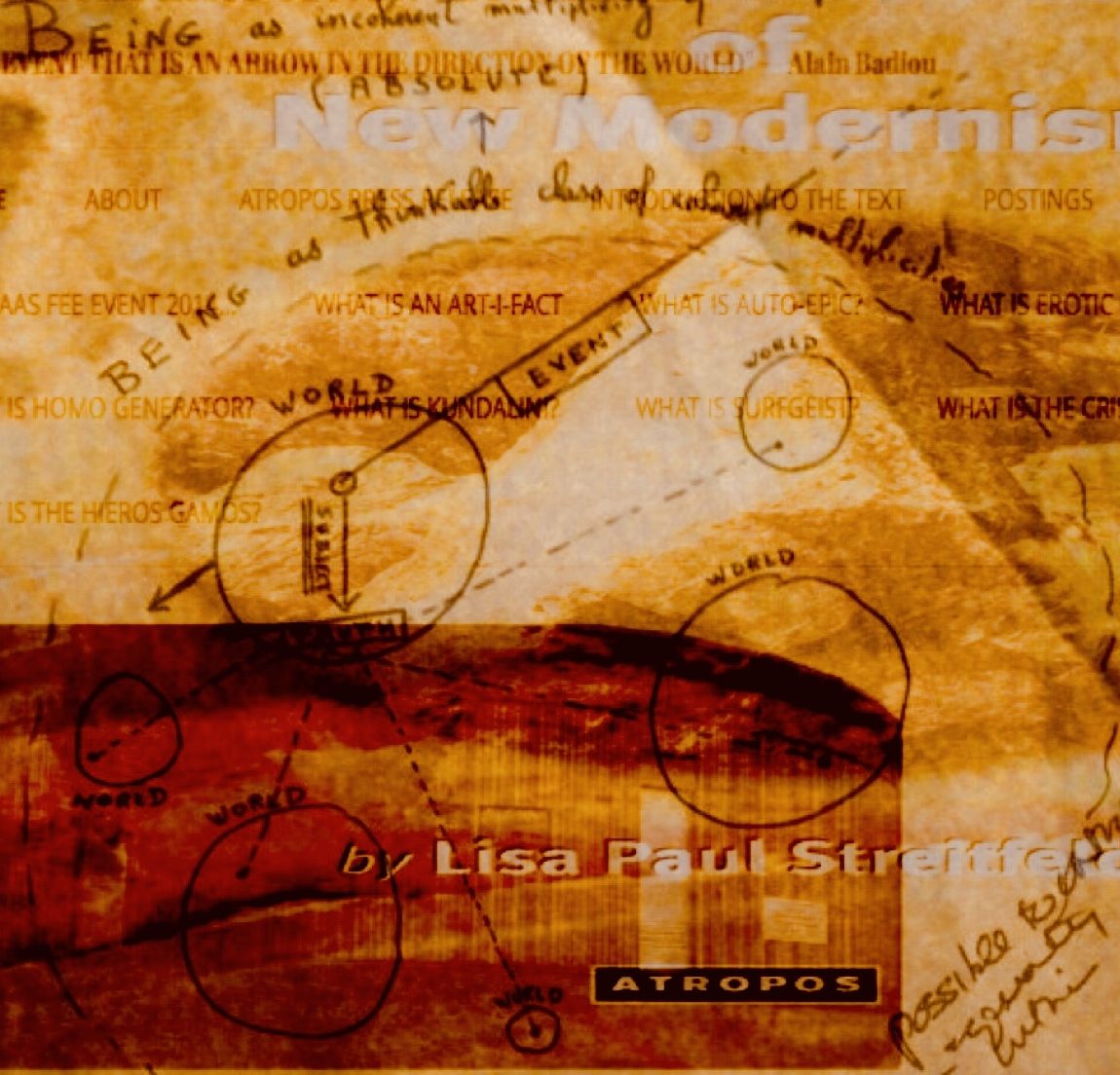The monumental Nedret Sekban image first grasps the viewer from the huge poster announcing the exhibition down the street from its magnificent location — the Tophane- Amire Center of Arts and Culture in Istanbul.
An intimately engaged view (below) of a gypsy wedding from the Third space “Between Life & Death” draws in the viewer as participant. The bride and groom are dancing in a spiral in which the opposites — human/animal, old/young, joy/fear — are wedded into otherworldly ecstasis in which eros and magic are personified.
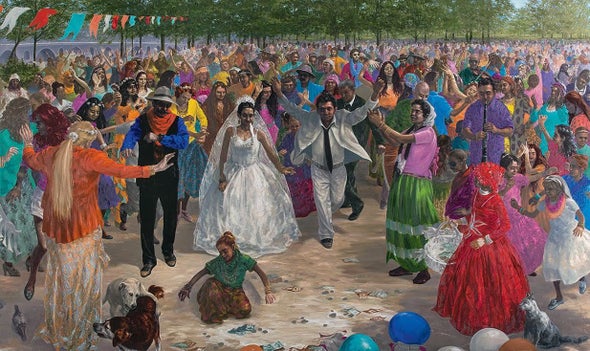
The retrospective of Nedret Sekban, the longtime professor of painting at Mimar Sinan Fine Arts University, at the majestic domed exhibition space engenders the sacred. Indeed, to look at Nedret’s self-portraits in which he miraculously captures life and death in his face, prompts the question: “Are you a Sikh?”
I had the opportunity to ask Nedret this question when he appeared in the gallery during my second visit, in the last days of 2017. He had one of the most centered and grounded spiritual presences I have ever encountered, and he replied that he is not a Sikh and neither is he an alchemist, though his works infuse the human being with the alchemical elements — fire, water, air, earth — capturing the quintessential element with his invented technique mastered in his recent masterpiece, Where are they going?, which brings the global refugee crisis that affects Turkey like few other countries, into sharp relief.
Crows are a favorite motif as nature’s messengers of death, and therefore imminent change. So are cut flowers, the bouquets which are held by so many of Nedret’s female figures. The sea is another. The power in Sekban’s sea paintings is the overwhelming pressure of waves captured through the emotional force of a controlled brush.
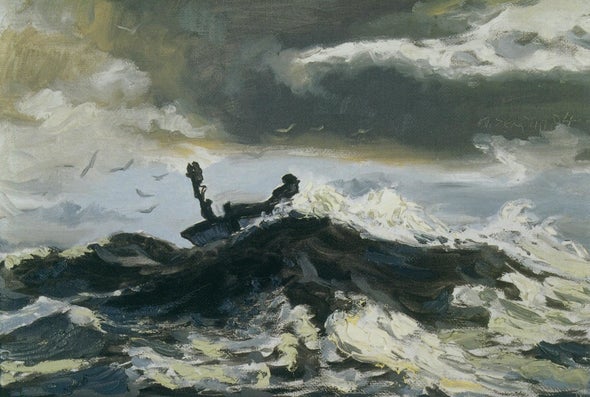
The monumental wave, crows, cut flowers, fallen bodies and the sea are all metaphors for the state “between life and death” which is the Third state in which the tensions of opposites are held.
This state of the in-between is captured with the juxtaposition between bodies.
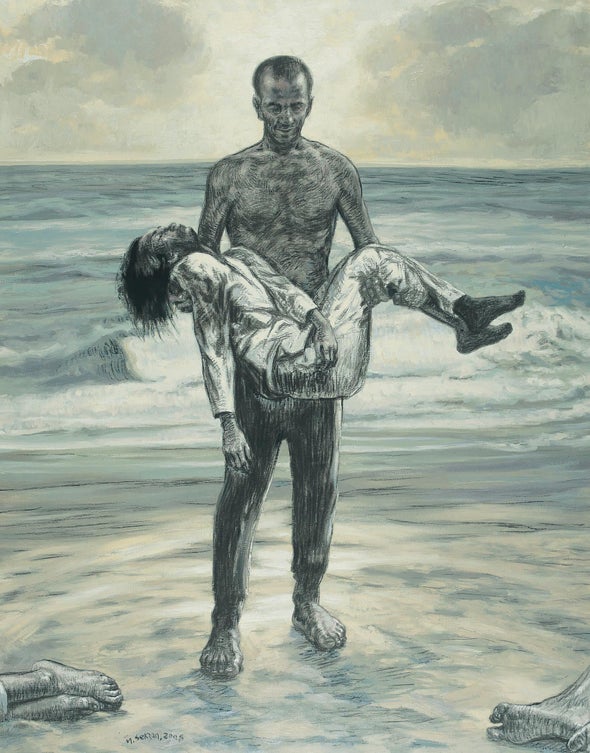
What transforms Sekban’s social realism into neo-modernism is in both his subject matter, the feminine as embodiment of cyclical time of life/death/rebirth, and his formal approaches to painting groups of human beings. In Arinma, he captures a gypsy ritual as a triangle of richly embroidered human bodies, with the shaman/priestess at the point. This human ordering, which he slyly puts into his titles ( ), convergences with geometry to transform the human into the sacred.

It is a rare painter who captures the primordial feminine in a manner that grabs the viewer, forcing them into participant with the organic surrender to nature. This is evident in his works in the furthest gallery which are titled as the elements.
For example, in organizing the three women into the classical triangle shape of resurrection in the Rite of Spring, the difference is evident between the classical body conceived in the mind and contained within its perfected form and the Sekban primordial body, which extends from the Earth out into space to encompass the quintessential.
The attention to emotion in his figures recalls on a visceral level Kaethe Kollwitz, or Van Gogh.
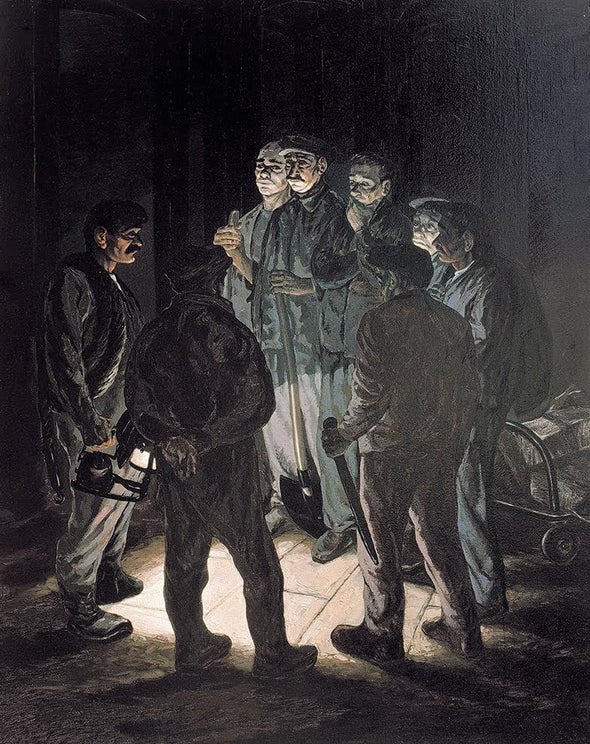
The origins are expressionist, bordering on the surreal.
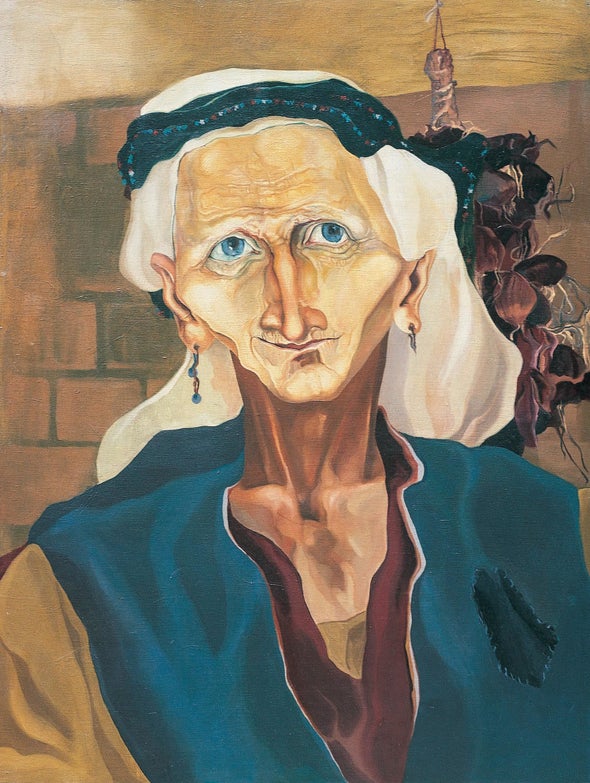
Yet, the development of style — from expressionist to social realism to a neo-modernist embodiment of the opposites, the hieros gamos, reveals to a new generation how the quantum leap is made into a holistic style emanating from the painter himself: through formal arrangements of bodies on the surface, the containment of the cyclical process of life/death/rebirth through the formal elements, including an apt symbol bridging the opposites.
These are what make this Turkish treasure into a Neo-modernist revival of painting in the 21st century. Embedded in his narratives of the human condition is a plea for honoring the feminine body that is united to the earth that sustains it. Here we have a (R)evolution in art that delivers the diligent viewer into the quantum leap into participant in the profound mystery of life, a secret that is so mysterious because it contains its opposite, death.
The one who masters this space between the opposites understands truly what life is — a state of being that demands full conscious participation. Sekban told me that he has no computer or electronic gadget.
Lisa Streitfeld is a critic based in New York and Berlin.
